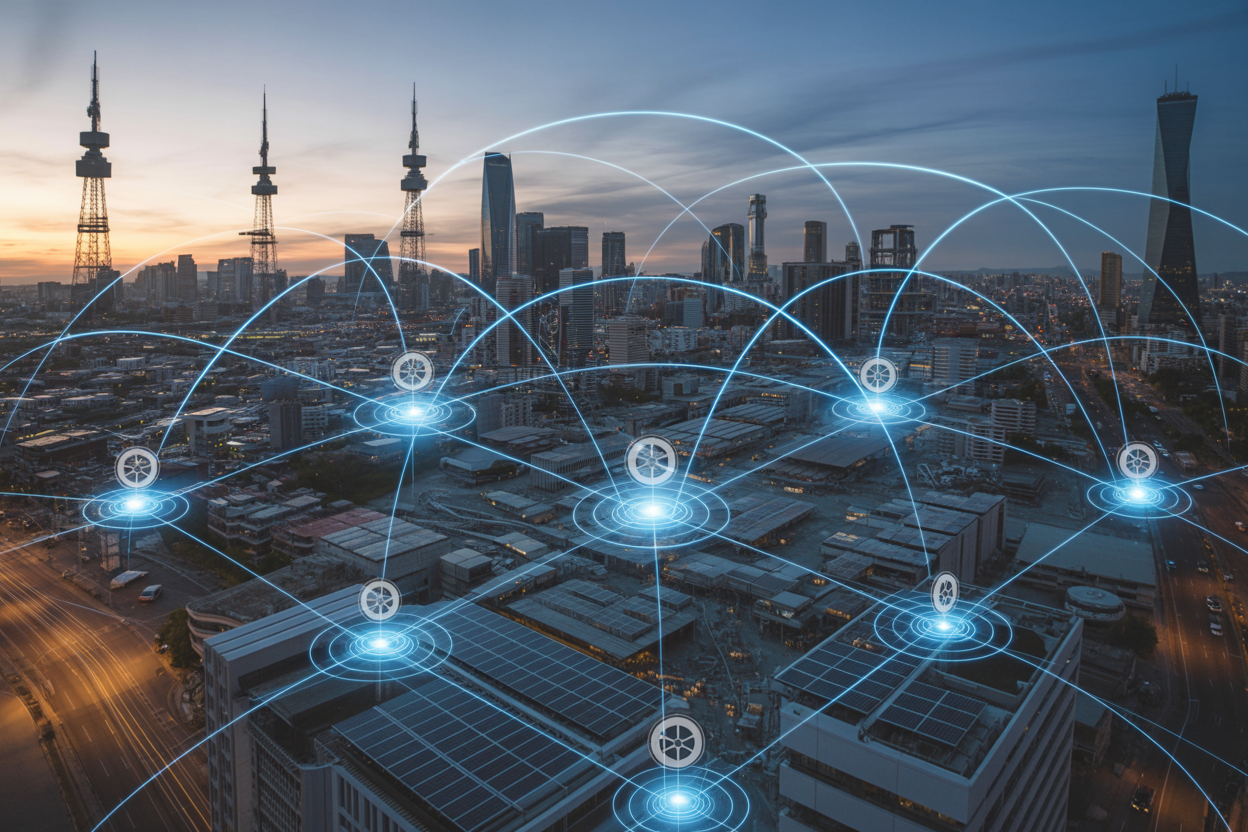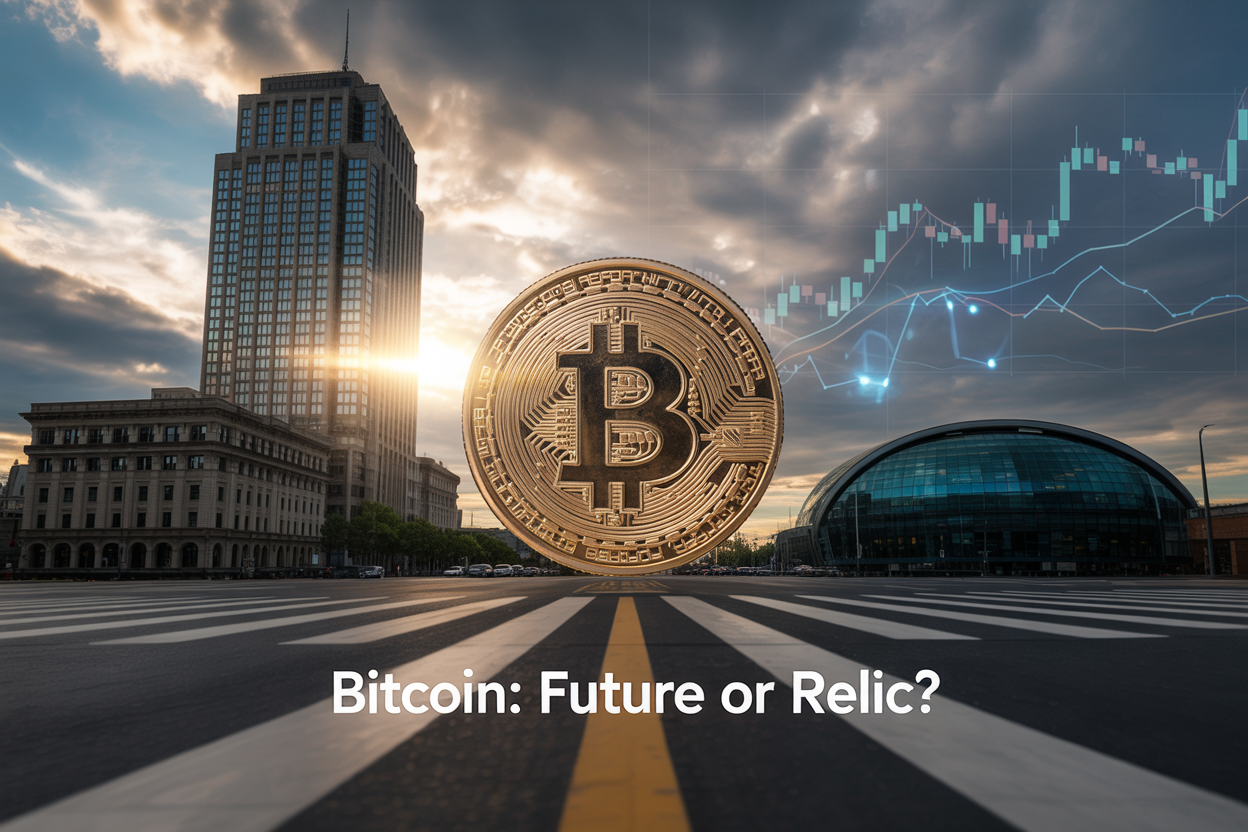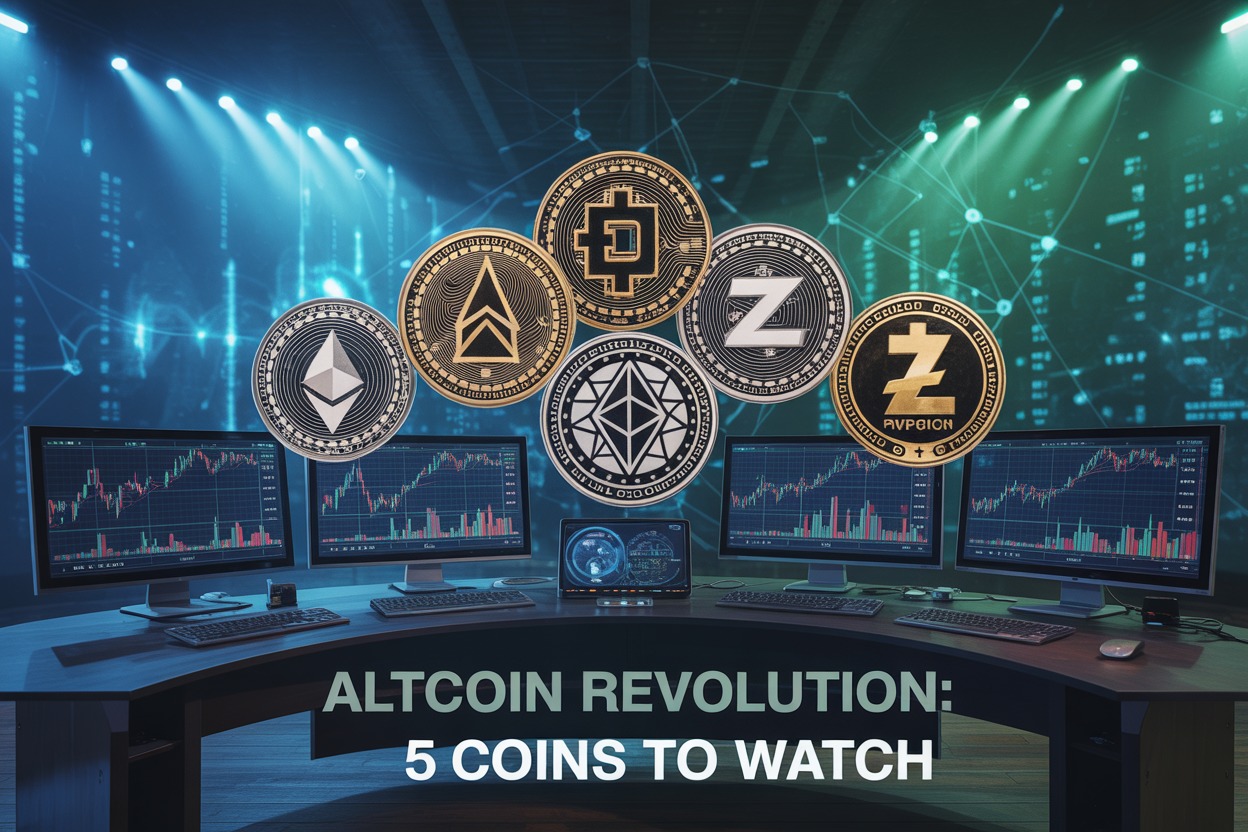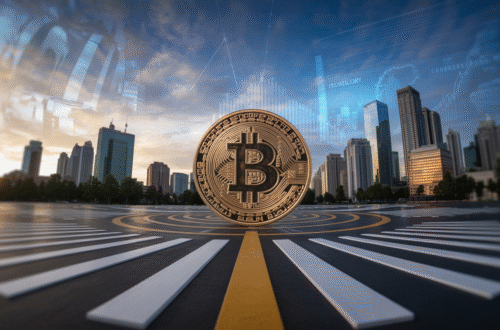Introduction
Decentralized Physical Infrastructure Networks (DePIN) are transforming how we build and manage real-world infrastructure using blockchain technology. This guide is for crypto investors, blockchain developers, and business leaders looking to understand how DePIN connects digital tokens with physical assets.
We’ll explore how traditional infrastructure is evolving toward decentralized models and break down the essential components that make DePIN systems work. You’ll also discover the growing sectors where DePIN is making an impact, from wireless networks to energy grids.
Understanding DePIN Fundamentals

A. What is Decentralized Physical Infrastructure (DePIN)?
Ever tried explaining crypto to your grandma? DePIN might be even trickier. But here’s the deal: DePIN stands for Decentralized Physical Infrastructure Networks – basically crypto projects that build real-world stuff.
Think about it this way. Traditional crypto lives in computers. DePIN connects blockchains to physical things – like WiFi hotspots, sensors, solar panels, or delivery drones. People contribute their devices or resources and get crypto tokens as rewards.
It’s like Airbnb for infrastructure. You’ve got something valuable (spare computing power, extra bandwidth, unused storage), and now you can rent it out to the network. The magic happens because the blockchain handles payments, verification, and governance without middlemen taking a cut.
B. How DePIN bridges digital and physical worlds
The digital-physical gap has been crypto’s biggest limitation for years. DePIN smashes that barrier.
When you connect real-world assets to blockchain networks, something incredible happens. Data from sensors can trigger smart contracts. Physical services get tokenized. Infrastructure becomes programmable.
Take Helium for example. Regular folks put small hotspots on their windowsills, creating a massive wireless network for IoT devices. The blockchain coordinates it all, rewarding hotspot operators with HNT tokens when they provide coverage and transmit data.
Or consider Filecoin – people rent out hard drive space to store files across a global network. The physical storage exists in thousands of locations, but the blockchain coordinates it as one seamless system.
C. Key differences between DePIN and traditional infrastructure models
Traditional infrastructure is dinosaur-level old school compared to DePIN:
| Traditional Infrastructure | DePIN |
|---|---|
| Centralized ownership | Community ownership |
| Geographic limitations | Borderless by design |
| High capital requirements | Crowdsourced resources |
| Permission-based access | Open participation |
| Slow deployment | Rapid scaling potential |
| Single points of failure | Distributed redundancy |
The old way? A company builds a data center, owns all the hardware, hires staff, and charges customers. The DePIN way? Thousands of individuals contribute small pieces of the infrastructure, forming a network nobody truly “owns.”
D. The economic incentives driving DePIN adoption
Money talks, and DePIN’s economic model shouts.
First, there’s the token incentive. Contributing to the network earns you crypto that could potentially increase in value. It’s not just payment – it’s ownership in the network’s future.
Second, DePIN slashes costs. When you distribute infrastructure across thousands of participants, you eliminate expensive centralized facilities. No need for massive data centers when thousands of home computers can do the same job.
Third, it creates entirely new markets. Suddenly, your extra internet bandwidth, computing power, or solar energy has value beyond your personal use.
Finally, the built-in token economics create powerful network effects. As more users join, the service improves, attracting more users, increasing token value, incentivizing more infrastructure providers… and the flywheel spins faster.
The Evolution of Physical Infrastructure

Historical infrastructure development patterns
Infrastructure hasn’t always been the complex web we know today. Back in the day, communities built what they needed locally – simple roads, basic water systems, small power generators. No grand plans, just solving immediate problems.
Then came the industrial revolution. Suddenly we needed massive railway systems, electricity grids spanning entire nations, and water networks serving millions. The only way to make this work? Centralization.
Big government agencies and corporations took control. They had the resources, expertise, and coordination abilities no individual community could match. This centralized approach gave us incredible achievements – national highway systems, transcontinental railways, and power grids that rarely fail.
But there was always a trade-off. The further control moved from local hands, the less responsive it became to specific needs. Ever wonder why your internet options are so limited? That’s centralization at work.
Limitations of centralized infrastructure systems
Centralized infrastructure has some serious problems we can’t ignore anymore.
First, it’s painfully inefficient. Think about power grids – they waste roughly 8-15% of electricity just in transmission. That’s energy literally disappearing into thin air because it has to travel so far.
Then there’s the single-point-of-failure issue. Remember that Texas freeze in 2021? One centralized system failed, and suddenly millions were without power for days.
Centralized systems are also terrible at adapting to local needs. A community might desperately need better internet, but if the big telecom companies don’t see profit there, tough luck.
And let’s talk about innovation – or rather, the lack of it. When a few major players control entire infrastructure systems, they’re not exactly motivated to rock the boat with new ideas.
The blockchain technology catalyst
Blockchain hit the scene and suddenly, we could reimagine infrastructure entirely.
The technology solves centralization’s biggest problems. With blockchain, you can coordinate thousands or millions of independent participants without a central authority. Think of it as the operating system for a new kind of infrastructure.
What makes blockchain perfect for this revolution? Three things:
- It creates trusted environments without middlemen
- It enables micropayments that make new economic models possible
- It provides incentives for network participants to act in the collective interest
Before blockchain, decentralized infrastructure was a pipe dream. The coordination costs were too high, trust issues were insurmountable, and payment systems weren’t granular enough.
Now? Those barriers are gone. Blockchain created the foundation for entirely new ways to build, maintain and operate physical infrastructure.
Real-world examples of successful DePIN transitions
The DePIN revolution isn’t theoretical – it’s happening right now.
Helium Network completely flipped the script on wireless networks. Instead of a few telecom giants controlling everything, over 900,000 individual hotspot operators now provide LoRaWAN coverage worldwide. These operators earn HNT tokens when their hotspots are used, creating an entirely new economic model for wireless infrastructure.
Filecoin tackled data storage with a similar approach. Rather than centralized data centers, they created a marketplace where anyone with extra storage space can offer it to the network. The result? More resilient, competitive, and flexible storage options.
Even power grids are changing. Brooklyn Microgrid lets neighbors sell excess solar energy directly to each other using blockchain-based smart contracts – no utility company needed.
The pattern is clear: infrastructure that was once exclusively the domain of massive corporations or governments is now being successfully distributed to thousands of independent operators.
Emerging trends shaping infrastructure decentralization
We’re just at the beginning of this transformation. Several trends are accelerating DePIN adoption:
Edge computing is pushing processing power closer to where data is created, making local infrastructure more valuable than ever. The old model of sending everything to centralized data centers simply can’t keep up with our real-time demands.
Hardware costs continue to plummet. Setting up infrastructure nodes that would have cost thousands just years ago can now be done for hundreds, opening participation to many more people.
Token economics are getting more sophisticated. Early DePIN projects sometimes struggled with token value stability. Now, multi-token systems and advanced economic designs are creating more sustainable incentives.
Regulatory frameworks are slowly catching up. Several countries now recognize the potential of decentralized infrastructure and are creating legal pathways for these systems to operate alongside traditional options.
The most exciting trend? Interoperability between different DePIN networks. Imagine your Helium hotspot also supporting Filecoin storage while connecting to a local energy microgrid – all working together seamlessly.
Core Components of DePIN Ecosystems

A. Tokenization mechanisms that power physical assets
Ever wondered how a physical cell tower or solar panel can be “tokenized”? In DePIN, tokenization turns real-world infrastructure into digital assets anyone can invest in and benefit from.
Think of it like this: when you buy tokens for a decentralized WiFi network, you’re actually buying partial ownership of the physical routers and antennas. These tokens do three important things:
- Represent ownership stakes in the infrastructure
- Reward contributors who provide resources
- Give holders governance rights to vote on network changes
Most DePIN projects use utility tokens that gain value as the network grows. When more people use that decentralized WiFi network, those tokens become more valuable because they’re needed to access the service.
What makes this revolutionary? Regular folks can now invest directly in infrastructure without going through traditional gatekeepers. You don’t need to be a telecom giant to profit from building cell towers anymore.
B. Consensus protocols for infrastructure governance
The days of boardroom decisions about infrastructure are fading. DePIN networks use consensus protocols that make governance democratic, transparent, and tamper-proof.
These protocols solve a fundamental problem: how do thousands of strangers agree on maintaining and upgrading physical infrastructure without central authority?
Popular mechanisms include:
| Protocol Type | Best Used For | Example |
|---|---|---|
| Proof of Physical Work | Networks requiring physical verification | Helium’s hotspot verification |
| Delegated Proof of Stake | Large infrastructure decisions | Filecoin’s storage provider elections |
| Reputation-Based | Service quality assurance | Weatherflow’s weather station accuracy |
The genius part? These systems align everyone’s incentives. Contributors who maintain high-quality infrastructure earn more tokens and more voting power. Bad actors get economically punished.
C. The role of smart contracts in automating operations
Smart contracts are the invisible workers that keep DePIN networks humming without human intervention.
Picture a decentralized electric vehicle charging network. When you plug in your car, a smart contract automatically:
- Checks your wallet balance
- Calculates electricity costs in real-time
- Transfers payment to the charging station owner
- Records the transaction on the blockchain
- Updates the station’s availability status
No middlemen. No paperwork. No delays.
These self-executing agreements handle everything from routine maintenance scheduling to distributing rewards among stakeholders. They’re the reason DePIN networks can operate 24/7 with minimal overhead.
The real magic happens when smart contracts connect with IoT devices through “oracles” that feed real-world data into the blockchain. When a sensor detects your solar panel is generating excess electricity, a smart contract can automatically sell it to the grid.
D. Decentralized data verification and validation
In traditional infrastructure, we trust central authorities to verify data. In DePIN, we trust math and community oversight.
Decentralized verification ensures that when a weather station claims it’s raining, it’s actually raining. This happens through:
- Multiple independent nodes cross-checking each other’s data
- Cryptographic proofs of physical measurements
- Economic incentives that reward honest reporting
- Reputation systems that track historical accuracy
Take Hivemapper, a decentralized mapping network. When drivers submit road footage, the network doesn’t just accept it blindly. Other participants verify its accuracy, GPS coordinates are cross-referenced, and multiple submissions of the same area are compared before that data becomes “official.”
This multi-layered approach makes DePIN data significantly more resistant to manipulation than centralized alternatives. No single entity can alter records without the network detecting the inconsistency.
DePIN Market Sectors and Applications

A. Telecommunications and connectivity networks
DePIN is revolutionizing how we build and access internet infrastructure. Traditional telecom networks? Expensive and controlled by a handful of corporations. But now projects like Helium are flipping the script by letting regular people set up and run wireless hotspots.
You buy a small device, plug it in at home, and suddenly you’re part of a decentralized network. You’re earning crypto tokens while providing connectivity to others. It’s that simple.
These networks are spreading like wildfire in places where traditional telecoms haven’t bothered to go. Rural areas and developing regions are getting connected without waiting for some corporation to decide they’re profitable enough.
B. Energy grid systems and microgrids
The energy sector is ripe for disruption, and DePIN is doing exactly that. Think about it – our power grids are outdated, centralized, and vulnerable.
Projects like Energy Web and Grid+ are building systems where households with solar panels can sell excess energy directly to neighbors. No middlemen. No massive utility companies taking a cut.
These microgrids are more resilient too. When a storm knocks out the main grid, these decentralized networks can keep the lights on. Communities are taking power generation (literally) into their own hands.
C. Mobility and transportation infrastructure
Getting around is changing thanks to DePIN. Ride-sharing without the Uber or Lyft taking a 25% cut? That’s happening now.
Decentralized networks are connecting drivers directly with riders. Electric vehicle charging stations owned by communities rather than corporations are popping up. Even parking spaces are getting the DePIN treatment with platforms letting people rent out their driveways and parking spots.
The coolest part? These systems are self-governing. Users vote on rules, pricing, and expansion plans. Transportation is becoming a community asset rather than a corporate service.
D. Computing and storage networks
Cloud computing has a DePIN alternative now, and it’s way cheaper than Amazon Web Services or Google Cloud.
Networks like Filecoin and Storj let people rent out their unused hard drive space. Render and Golem do the same for computing power. Someone editing a video in Tokyo might be using processing power from computers in Berlin, Buenos Aires, and Bangkok – all at once.
These networks are slashing costs by up to 90% compared to centralized options. Plus, your data isn’t sitting in some mega-corporation’s data center. It’s split up, encrypted, and distributed across thousands of devices worldwide.
E. IoT and sensor networks
The Internet of Things needed DePIN, we just didn’t know it until now. Traditional IoT systems are expensive to deploy and maintain at scale.
DePIN projects are creating networks of sensors that monitor everything from air quality to water levels to traffic patterns. The twist? Regular people own and operate these sensors.
Weather prediction networks like WeatherXM have participants installing small weather stations at home. They collect hyper-local data (way more accurate than traditional forecasts) and earn tokens for their contributions.
These community-owned sensor networks are creating incredibly detailed environmental maps, helping cities become smarter without the massive price tag of corporate-led solutions.
Overcoming DePIN Implementation Challenges

Regulatory hurdles and compliance strategies
Building a DePIN network isn’t just about cool tech—it’s about navigating a maze of regulations that weren’t designed for decentralized systems.
The reality? Most regulatory frameworks are stuck in the centralized past. When your network spans dozens of countries with physical infrastructure operated by thousands of participants, compliance becomes a headache.
Smart DePIN projects are tackling this by:
- Creating jurisdiction-specific operating entities
- Implementing geo-fencing when necessary
- Adopting modular compliance approaches where nodes in different regions follow local laws
Think about Helium’s approach. They’ve structured their network so individual hotspot operators aren’t directly selling telecommunications services—they’re providing coverage validation and earning tokens. This clever distinction has helped them expand globally despite telecom regulations.
Scalability solutions for mass adoption
DePIN networks face a unique scaling challenge: they have to grow both on-chain and in the physical world.
The technical bottlenecks aren’t just about transaction throughput—they’re about coordination between thousands of physical devices.
Here’s what’s working:
- Layer-2 solutions that batch updates from physical infrastructure
- Zero-knowledge proofs to verify device actions without constant on-chain reporting
- Sharding physical coverage areas to regional subnets
- Hardware standardization programs that ensure compatible devices
The projects gaining traction are those designing for real-world constraints from day one. Take decentralized wireless networks—they’re implementing local validation pools to handle most coordination off-chain, only settling periodic snapshots to the main chain.
Security considerations for physical-digital interfaces
The attack surface of a DePIN network makes traditional blockchain security look simple.
When you connect physical devices to economic incentives, you create opportunities for people to game the system. We’ve already seen GPS spoofing attacks on location-based networks and hardware tampering to fake resource contributions.
The most robust DePIN security approaches combine:
- Multi-layered physical verification (cross-device validation)
- Cryptographic hardware attestation
- Economic penalties for provable misbehavior
- Progressive trust systems where new devices earn privileges over time
Physical security isn’t an afterthought—it’s the foundation. Networks like Filecoin have implemented elaborate “proof of spacetime” mechanisms specifically because they understand physical resources can be faked without proper validation.
Balancing decentralization with operational efficiency
The uncomfortable truth about DePIN is that pure decentralization often conflicts with operational needs.
Building physical infrastructure networks requires coordination that purely trustless systems struggle with. How do you coordinate hardware upgrades across thousands of independent operators? How do you ensure quality service when node operators have different priorities?
The most successful DePIN projects have found this middle ground:
- Core protocol governance remains highly decentralized
- Day-to-day operations use tiered permission systems
- Emergency response capabilities exist for critical infrastructure
- Economic incentives align individual operators with network quality
This isn’t selling out—it’s being practical. Even Ethereum needed the Merge Coordinator to pull off its transition to proof-of-stake. Physical infrastructure adds another layer of complexity that requires thoughtful design around where centralization actually matters.
The Investment Landscape for DePIN Projects

A. Evaluating DePIN token economics and sustainability
Money talks in DePIN projects. And what it’s saying matters more than you think.
The token model makes or breaks these networks. The best ones align everybody’s interests – users, node operators, developers, and investors all rowing in the same direction.
Look for these token economic red flags:
- Excessive token allocation to founders (anything over 20% should raise eyebrows)
- Vesting schedules shorter than 2 years
- Unclear utility within the network ecosystem
- No burn mechanisms or deflationary elements
What separates sustainable models from cash grabs? Tokens that serve real utility beyond speculation. Think Helium’s HNT, where tokens reward actual network coverage, or Filecoin’s FIL, which powers storage transactions.
B. Risk assessment frameworks for infrastructure investments
Physical infrastructure means physical risks. DePIN isn’t just code living on servers.
Smart investors build their risk matrix across multiple dimensions:
| Risk Category | Key Considerations | Mitigation Strategies |
|---|---|---|
| Technical | Hardware obsolescence, network security | Modular designs, regular security audits |
| Regulatory | Jurisdiction-specific compliance, data governance | Geographic diversification, legal counsel |
| Economic | Token volatility, incentive stability | Reserve funds, adaptive reward mechanisms |
| Operational | Network reliability, hardware maintenance | Redundancy systems, distributed operations |
The projects tackling these head-on deserve your attention. Many don’t.
C. Growth metrics that matter for DePIN projects
Forget the vanity metrics. These numbers actually tell you something:
- Network density – How well is coverage distributed? Is it concentrated or widespread?
- Hardware deployment rate – Month-over-month growth in physical nodes
- Token velocity – How quickly tokens circulate through the system
- Revenue per node – Are operators actually making money?
- Network usage – Real demand vs. speculative activity
The most promising projects show steady growth across these metrics without needing constant token incentives to prop them up.
D. Strategic opportunities for institutional and retail investors
The playing field isn’t level – and that’s okay.
Institutional investors: Your advantage is capital deployment at scale. Target projects needing substantial infrastructure buildout like wireless networks or computing grids. Consider direct hardware deployment partnerships that bypass token markets entirely.
Retail investors: You move faster. Focus on:
- Early-stage projects with working prototypes
- Governance tokens where small holders can influence direction
- Node operation for projects with low hardware barriers
Both should watch for sector consolidation. As winners emerge, acquisition opportunities will reshape the landscape dramatically.
The projects merging real utility with tokenomics excellence will deliver outsized returns. Most won’t. Do your homework.

The integration of blockchain technology with physical infrastructure has opened new frontiers for decentralization. DePIN represents a fundamental shift in how we build, maintain, and interact with essential services—from telecommunications to energy grids. By leveraging token incentives and community governance, these networks are creating more resilient, accessible, and equitable infrastructure systems that benefit both users and contributors while reducing dependence on centralized authorities.
As DePIN continues to mature, we’re likely to see accelerated adoption across various sectors, particularly in regions where traditional infrastructure development faces limitations. For investors and technologists alike, this emerging space offers compelling opportunities to participate in rebuilding our physical world with digital-native principles. Whether you’re considering contributing resources to a network or exploring investment possibilities, now is the time to engage with the DePIN ecosystem and become part of this transformative movement.




